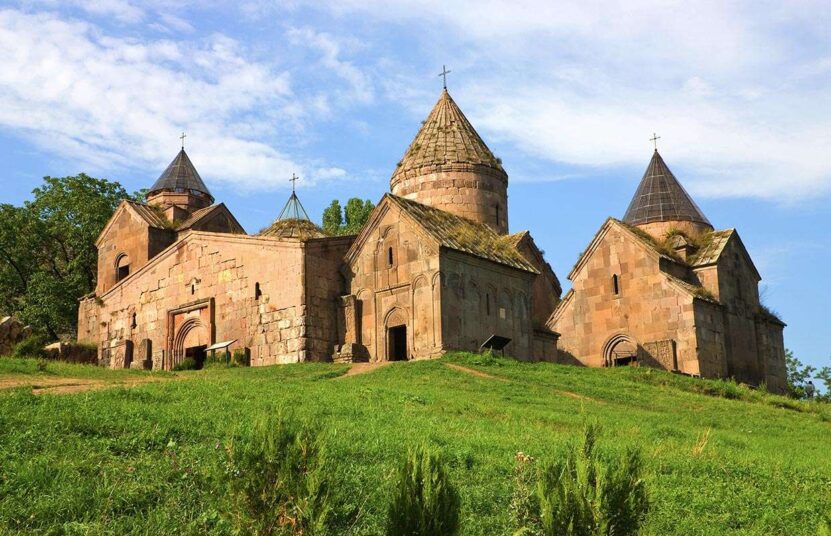If you’re planning a trip to Armenia, you absolutely can’t miss visiting Goshavank Monastery. Tucked away in the Tavush region, this ancient monastery isn’t just a pretty building—it’s a place full of rich history, unique Armenian architecture, and serene natural beauty.
Having spent a day exploring the site, I can say with confidence that it’s one of those hidden gems that you will want to put on your travel list.
Key Takeaways
- Founded in the 12th century by Mkhitar Gosh, a legendary Armenian scholar.
- Famous for khachkars (cross-stones) and medieval architecture.
- Surrounded by beautiful nature in the Dilijan National Park area.
- Great for history buffs, hikers, and anyone looking for a peaceful retreat.
- Perfect for those interested in Armenian culture, law, and religion.
A Brief History of Goshavank Monastery
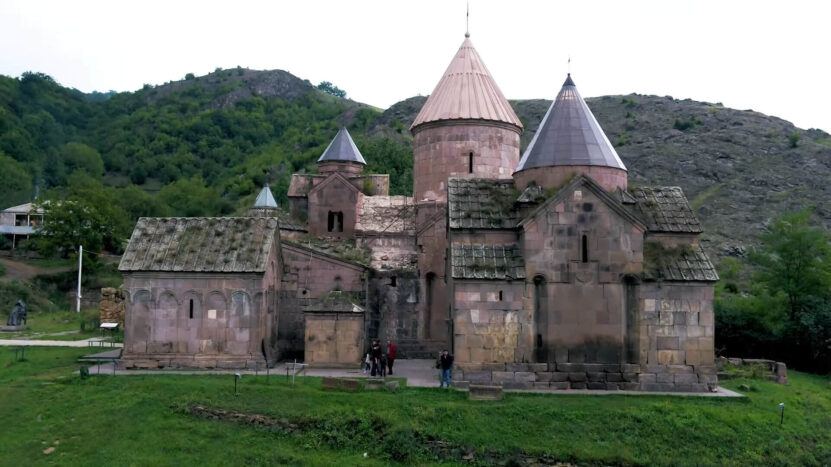
Goshavank was originally known as Nor Getik Monastery, but it was renamed after the famous Armenian scholar Mkhitar Gosh, who founded it in the 12th century.
Gosh was one of Armenia’s most prominent legal experts and scholars, and he spent his life working on the creation of Armenia’s first legal code, the Datastanagirk.
After the original monastery, Getik, was destroyed by an earthquake, Gosh worked with local princes to rebuild it at its current location.
The monastery quickly became a key center for education and religious studies. Scholars and historians from across the country came to Goshavank to study and share knowledge.
The monastery housed the first Armenian law library, and Mkhitar Gosh’s influence is felt here to this day.
Key Sites Within the Goshavank Monastery Complex
| Site | Description |
|---|---|
| St. Astvatsatsin Church | Main church, 12th century |
| St. Gregory Church | Smaller church, 13th century |
| Gavit | Public hall for gatherings and study |
| Khachkars | Famous cross-stones, especially the one from 1291 |
| Bell Tower | Added in the 13th century, used for calling monks to prayer |
| Lake Gosh | Scenic mountain lake nearby |
Why Visit Goshavank?
One of the things that makes Goshavank special is its unique combination of historical importance and beautiful surroundings. The monastery is nestled in the lush hills of the Tavush region, near the town of Dilijan.
The nearby forests and mountains make it a peaceful, almost mystical place to visit. You can easily spend a whole day there, soaking in the history and enjoying the natural beauty of the region.
The Architecture
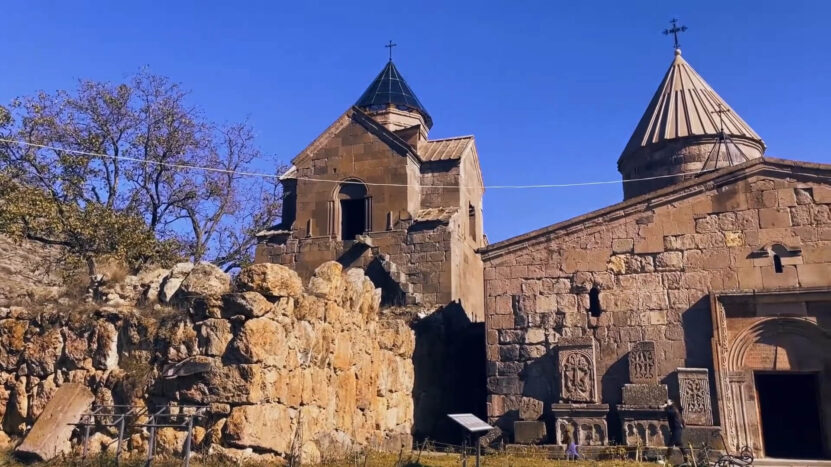
The architecture of Goshavank Monastery is a stunning example of medieval Armenian design. The St. Astvatsatsin Church and St. Gregory Church are the main religious buildings, with their intricately carved doorways and stone walls.
The bell tower, added later in the 13th century, stands as a reminder of the monastery’s importance as a religious center.
As we already mentioned, one of the standout features of Goshavank is its khachkars. These intricately carved cross-stones are one of Armenia’s unique contributions to world art.
The most famous khachkar at Goshavank was created in 1291 by the master Poghos, and it’s renowned for its detailed, lace-like carvings.
These cross-stones were often used as memorials or to mark significant religious events, and they are still revered by visitors today.
Exploring the Grounds
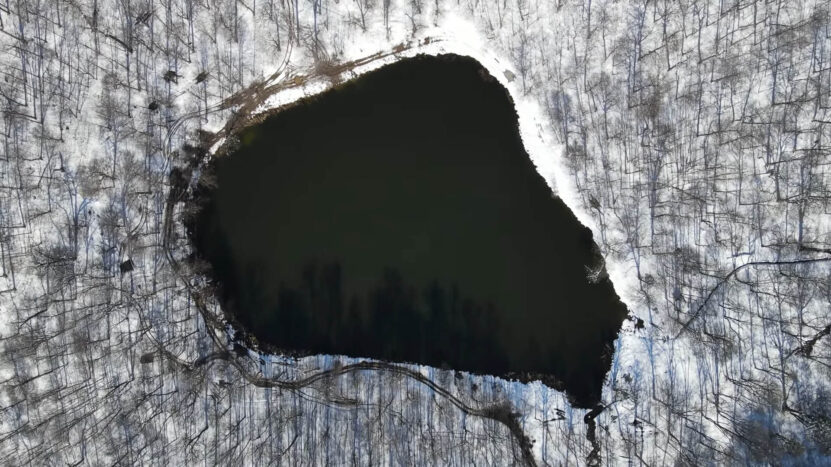
As you walk around the monastery complex, you’ll come across several chapels, a library, and even a gavit (an entry hall often used for public gatherings). The gavit of St. Astvatsatsin Church is particularly interesting because of its blend of religious and practical uses.
It was where monks and scholars would gather to study, and the architecture reflects its multipurpose nature.
A short hike from the monastery will take you to Lake Gosh, a small, serene mountain lake hidden in the forest. This makes Goshavank a perfect spot for combining cultural exploration with outdoor activities like hiking.
Activities and Tours

There are several ways to explore Goshavank and its surroundings. Many travelers opt for day tours that combine visits to other nearby monasteries, like Sevanavank and Haghartsin, with a stop at Goshavank.
If you’re looking for something more adventurous, you can also take a hiking tour from Parz Lake to Lake Sevan, passing through Goshavank on the way.
If you’re a foodie, some tours also include a gastronomic experience where you can sample traditional Armenian dishes. The local cuisine is hearty and flavorful, with dishes like khorovats (Armenian barbecue), lavash (flatbread), and gata (sweet bread) being particularly popular.
What Makes Goshavank Special?
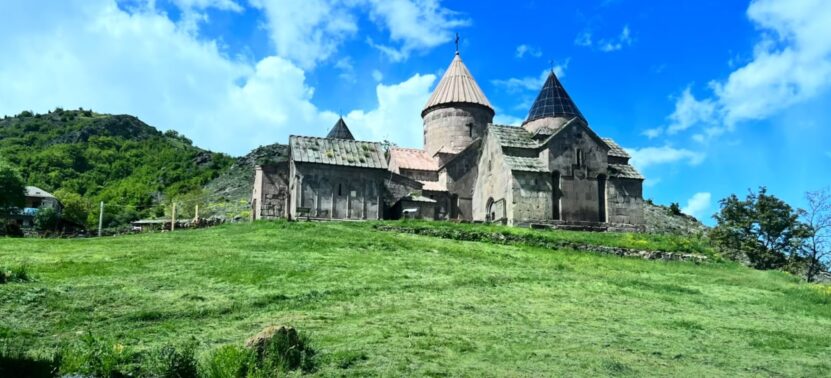
Goshavank Monastery was a hub of learning during medieval times, offering much more than religious teachings. The scriptorium at the monastery played a key role in the preservation and dissemination of both religious and secular knowledge.
Monks worked day and night to produce manuscripts, not only on religious subjects but also covering scientific, philosophical, and legal topics. These texts were vital in spreading knowledge throughout medieval Armenia.
One interesting fact is that Goshavank housed one of the largest collections of manuscripts in the region. Many of these manuscripts were carefully crafted with elaborate illustrations, turning them into both educational tools and works of art. This combination of art and scholarship made Goshavank a beacon of Armenian intellectual life.
Mkhitar Gosh, the founder, ensured that the monastery offered a well-rounded education. The curriculum went beyond theology, with law, philosophy, and even medicine being taught.
Monks were often sent to other regions to share this knowledge, further spreading Goshavank’s influence.
The khachkars found at the site serve not only as religious symbols but also as visual aids for teaching important lessons. These cross-stones often included symbols and inscriptions that communicated religious and ethical principles.
The bell tower, constructed in the 13th century, was a symbol of the intellectual and spiritual life at the monastery. It did not just signal prayer times but also marked the start of scholarly discussions, debates, and teachings.
The ringing of the bells was a daily reminder of the active learning environment that defined Goshavank during its peak.
Additionally, the library was filled with texts that spanned topics well beyond Armenia, making it a repository for international knowledge.
Scholars from surrounding regions came to Goshavank to study, adding to the monastery’s reputation as a center of learning across the medieval world.
All of these aspects helped Goshavank stand out as a unique place where education, law, and faith intersected in one of the most beautiful settings in Armenia.
Visiting Tips
- Best time to visit: Spring and fall are the best seasons to visit Goshavank. The weather is mild, and the surrounding nature is at its most beautiful.
- What to wear: Comfortable shoes are a must, especially if you plan on hiking. The monastery complex has uneven stone paths, so sturdy footwear is recommended.
- How to get there: Goshavank is easily accessible by car from Dilijan. If you don’t have your own transportation, many local tour operators offer day trips that include Goshavank.
FAQs
How do I get to Goshavank Monastery?
You can easily reach Goshavank Monastery by car from Dilijan. It’s around 20-30 minutes away. If you’re traveling from Yerevan, the trip takes about two hours. There are also local tours that include transportation.
Is there any hiking around Goshavank Monastery?
Yes, there are several beautiful hiking trails near Goshavank. One of the most popular is the hike from Parz Lake, which passes through the surrounding forests. The hike to nearby Lake Gosh is another great option.
Are there any restaurants near Goshavank Monastery?
There aren’t many restaurants right next to the monastery, but Dilijan, just a short drive away, has a variety of places to eat. You can enjoy traditional Armenian dishes in many local eateries there.
What should I wear when visiting Goshavank Monastery?
Since the terrain around the monastery is a bit uneven, it’s best to wear comfortable shoes. If you plan on hiking nearby, sturdy footwear and layers are recommended, especially during cooler months.
Can I visit Goshavank in the winter?
Yes, Goshavank is open year-round, but the best time to visit is in the spring and fall. Winter visits can be beautiful, with snow-covered surroundings, but be prepared for cold weather and possible snow on the roads.
Is there an entrance fee to Goshavank Monastery?
No, there is no entrance fee to visit Goshavank Monastery. It’s free to explore the grounds, although guided tours are available if you want more in-depth information.
Final Thoughts
If you’re planning a trip to Armenia, Goshavank Monastery should be at the top of your list. From its ancient khachkars to its serene mountain setting, Goshavank offers a perfect blend of history, spirituality, and natural beauty.
So pack your bags, lace up your hiking boots, and get ready to explore one of Armenia’s most fascinating destinations. You won’t be disappointed!

